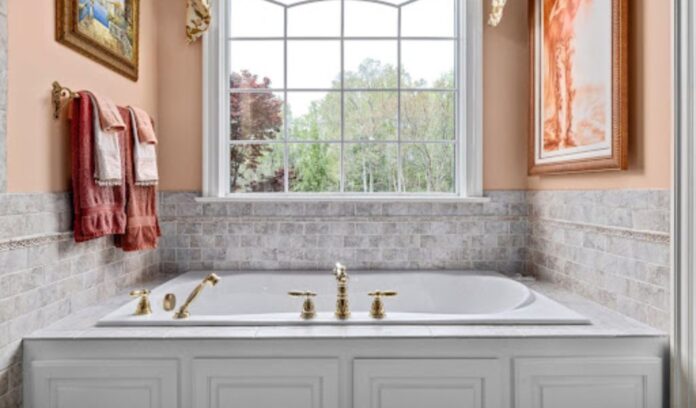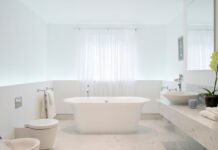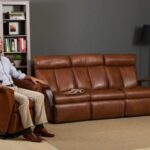Cladding options for bathrooms may include coat, paint, tiles, wallpaper, and more; thus, selecting the appropriate bathroom cladding requires consideration of various factors, which you should analyse first.
Even though tiles are still the most popular material for bathrooms, many new products have been introduced in recent years to expand the selection that can be purchased in this sector. This guide will provide you with information about the various materials that may be used for bathroom cladding.
-
Tiles
Tiles are an excellent choice for damp environments and continue to be the most suitable material for covering a bathroom in this day and age. They are long-lasting and waterproof, and even with periodic cleaning, they preserve the bathroom in a sanitary condition. A huge selection of tiles is available today, each featuring a unique combination of colour and size. DIY tiling projects for bathroom cladding are a simple way to make your interior design visions a reality.
-
Tadelakt Wall
One of the claddings you might choose is a tadelakt wall, one of the more natural-looking options. It is constructed using powdered marble, water, and lime. The material comes in a variety of colours, each of which is both attractive to the eye and an ideal complement to a certain piece of bathroom equipment. It will give the appearance of having a hammam in your bathroom.
-
PVC Cladding
PVC cladding is quite versatile and comes in a wide range of various designs to choose from. It has a glossy and wood-like appearance, and it is a very affordable solution to replace more costly materials since it can replicate most of those materials.
Even if certain easy-to-apply coatings are comparable to tadelakt, the traditional one still demands knowledge of the specialised techniques. Therefore, it is strongly advised that you use the services of an expert for this task.
-
Waxed Concrete
The use of waxed concrete in your bathroom cladding creates an atmosphere that is both luxurious and contemporary. Be aware, however, that the only way for this material to have a long lifespan is if it is applied flawlessly. If this does not occur, the cladding will not be waterproof and will not be stainless. For work of this kind, you must get assistance from a qualified expert.
-
Paint
The walls parallel to the shower, bathtub, or sink may be painted. If you pick this option, you must use high-quality weatherproof paint. Nonetheless, it is possible to get paint at a reasonable cost. One of the primary benefits of paint is that it can be swiftly placed on the wall and instantly add a fresh attitude and vitality to your bathroom.
Moreover, maintenance is very straightforward since you simply need to clean it regularly. If you change your mind about the style, you may easily alter the hue of the walls.
-
Wallpaper
You may be surprised to learn that wallpaper can be used in a room that gets a lot of moisture, but specialised solutions are now available for just such an application. It is a simple and fast method for producing an authentic atmosphere. The most significant drawback is that it might be rather challenging to put into practice.
You would need to be patient and meticulous, or you would need to let a professional handle the situation. A feeling of being in the tropics can be gleaned from the photo thanks to the wallpaper and the wooden furnishings.
Conclusion
Now, you better understand the benefits associated with the various materials suitable for use in bathroom cladding. So, you can get the most out of your bathroom cladding right now!


















![10 Countries With the Best Healthcare in the World [Statistical Analysis] Countries With the Best Healthcare in the World](https://articleify.com/wp-content/uploads/2025/07/Countries-With-the-Best-Healthcare-in-the-World-1-150x150.jpg)










